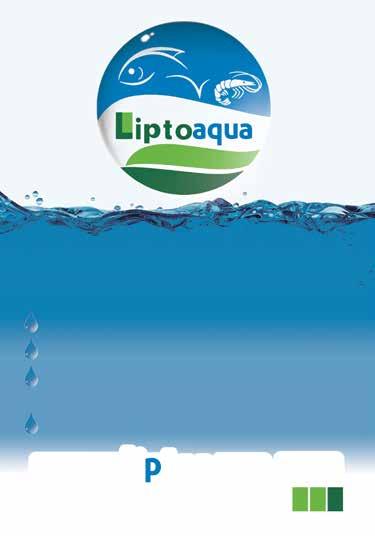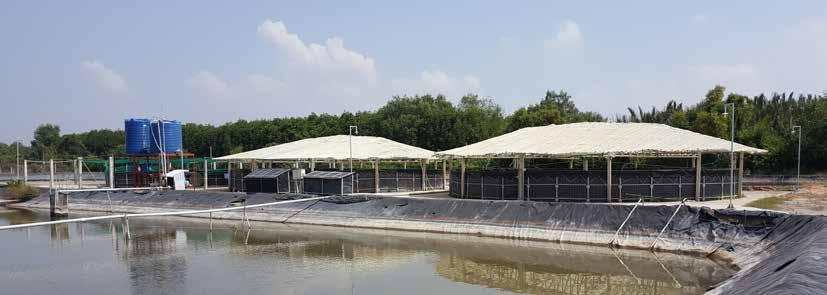
10 minute read
Securing the shrimp nursery with water recirculation system
By Henry Cuong, Truong Ngoc Thao, Phong Chau and Van Thi Thai Nguyen
View of the BIOSIPEC model in ADM’s R&D centre in South Vietnam.
Over the last decade, as shrimp farmers continue to face increasing pressure from several diseases such as white spot syndrome virus (WSSV), early mortality syndrome or acute hepatopancreatic necrosis disease (EMS/AHPND) and white faeces syndrome (WFS), many of them started to add a nursery stage in their production system. The initial purpose of this nursery stage is to maintain post larvae in the best culture conditions for 3 to 4 weeks prior to the transfer to exposed grow-out ponds, where environmental conditions can be very challenging and unpredictable.
More than 5 years ago, ADM developed the BIOSIPEC or Biosecurity Intensive Production Environmental Control model. This is an innovative shrimp farming model aimed at reducing water exchange, thanks to a recirculation pond that serves as a huge biofilter to manage waste and keep optimal conditions for the sensitive nursery stage (Table 1).
Today, the flow-through system is the main option for farmers in Asia. However, good water quality resources are scarce in Asia, especially with fluctuating water quality conditions brought about by rainy seasons and frequent disease outbreaks. Therefore, reusing water from a recirculation pond is a sensible way to reduce water usage and limit the risk of pathogenic infections from the external environment.
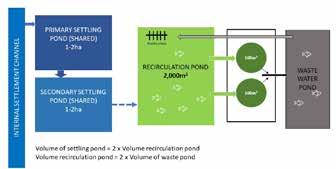
Figure 1. Schematic representation of the nursery system with the use of recirculation pond.
The recirculation model has three main parts, namely the recirculation pond, the nursery tanks and the wastewater pond as shown in Figure 1. The wastewater pond is both a place to accumulate suspended solids and reduce levels of toxic wastes (NH3, NO2) and pathogenic bacteria (Vibrio spp.). 1
BIOSIPEC
WATER EXCHANGE system RECIRCULATION pond system BIOFILTER tank system BIOFLOC system
Table 1. A comparison between a system with water exchange only and the total water recirculation model in the Biosipec system.
Waste management
Nursery tank
*Blue arrow: inflow of clean water *Black arrow: outflow of water effluent
Applicable conditions § Allows water a single pass through § Areas have favourable water resources § Water exchange rate : 12-15 times § Water circulation with recirculating pond § Adapted to areas with limited water supplies § Areas are under high disease burden § Water circulation with biofilter tank § Adapted to areas of extremely limited water supplies § Needs high technical skills § Zero water exchange, waste is kept in water column by strong aeration § Require very high technical skills and experience
Nursery tank
Recirculation pond
Nursery tank
Biofilter tank
Nursery tank
Characteristics of the recirculation pond
Based on the results of numerous nursery cycles with different set-ups, we have established the reference nitrification capacity of the biofilter and concluded that the volume of the recirculation pond should be 10 times higher than the total volume of nursery tanks.
Volume recirculation pond =
10 times of Volume
nursery tank
The recommended size range for the nursery tanks is 100250m3 each. This is a good balance; small tanks (30-50m3) with a high stocking density will increase the risk of batch collapse. Those which are too large, such as 1,000m3 are very difficult to manage.
Operating the recirculation pond
Water for the recirculation pond is pumped from the shared intake source into the internal settling channel where it stays for 3-5 days. It is then transferred to the primary settling pond for 15 days before being pumped to the secondary settling pond for another 15 days.
However, before transferring the water to the recirculation pond, the latter should be cleaned, dried, and treated with lime, if applicable. Water should be pumped from the secondary settling pond to a depth of 1.7-2.0m and adjusted for pH, alkalinity and transparency, if needed. Tilapia and Asian seabass or barramundi should be stocked at a density of 0.1 fish/m2 .
When 10 to 20% of the recirculation water is lost due to seepage or evaporation, new water should be added following the same protocol. The recirculation pond water can be used used up to 6 or 7 nursery cycles per year over 2 to 3 years before requiring a full pond maintenance.
Operating the nursery tank coupled to a recirculation pond
Water preparation
Seven days before stocking, water is pumped through a net filter (Ø 100µm or smaller) and chlorine is added to reach an ORP (Oxidation Reduction Potential) of 700mV while maintaining strong aeration. Two days before stocking, it
Value Remarks
Temperature 28 – 31oC Greenhouse, plastic roof, dark netting, etc.
Dissolved oxygen (DO)
4 – 6 ppm Drop low at night and in high organic matter accumulated pH 7.5 – 8.3 ∆ pH afternoon-morning <0.5/day Salinity ≥ 10 ppt ∆ salinity ≤ 5ppt/day (rainy season!)
Alkalinity 120 – 140 ppm High alkalinity will keep pH stable!
Ca/Mg/K Brackish water, specific mineral content depends on salinity Basic ratio Mg: K = 3.6: 1
NH3 ≤ 2 ppm More toxic when high pH (pH > 8.5)
NO2 ≤ 2 ppm More toxic when low salinity (< 10ppt)
Total Vibrio ≤ 103 CFU/mL (FAO) Higher density, more risk
Table 2. Requirements on environmental conditions during the nursery stage.
is important to check for chlorine residues and adjust the water parameters to the optimum range (pH, alkalinity, etc.). These parameters should be checked daily during the whole nursery cycle (Table 2).
Post larvae quality
Prior to stocking, checks on the quality of post larvae should be carried out, by applying the following eight criteria: appearance, total length, age, colour of the hepatopancreas, lipid vacuoles, muscle/gut ratio of the 6th segment, external fouling, deformity rate and salinity stress test. All post larvae bags must be disinfected before stocking.
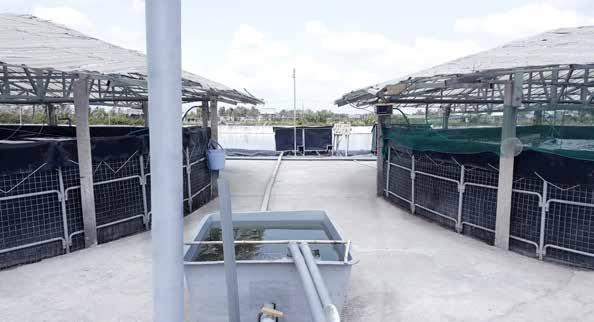
Two nursery tanks with the mechanical sedimentation tank and piping to the recirculation pond.
average survival and such as NH3 success rates ≤ 2ppm, NO2 ≤ 2ppm (Figure 2) and Vibrio density at ≤ 103 CFU/mL (using the recirculation model have been proven to be high at Figure 3). The average survival and success rates using the recirculation model have been proven to be high at 88% and 95%, respectively. The cost of production at this nursery stage was USD10/1,000 22 Shrimp Culture-Innovation88% and 95%, respectively. The cost of production at this nursery stage was USD10/1,000 juveniles (Table 3). When compared with the commonly used water exchange model in Asia, juveniles (Table 3). When compared with the commonly used water exchange model in Asia, the recirculation model operates with 10 to 15 times lower water volumes during the nursery phase. the recirculation model operates with 10 to 15 times lower water volumes during the nursery phase.
Figure 2: Fl Figure 2: Fluctuations in average uctuations in average NHNH3 and NO2 readings. 3 and NO2 readings.
Figure 2. Fluctuations in average NH3 and NO2 readings.
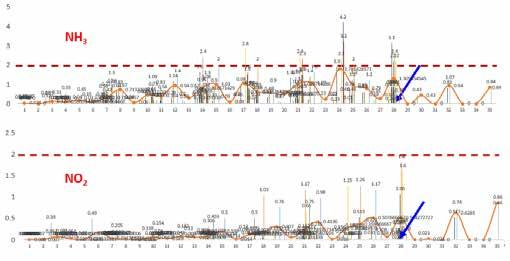
Figure 3. Fluctuations in average values of total Vibrio (units 103 CFU/mL).
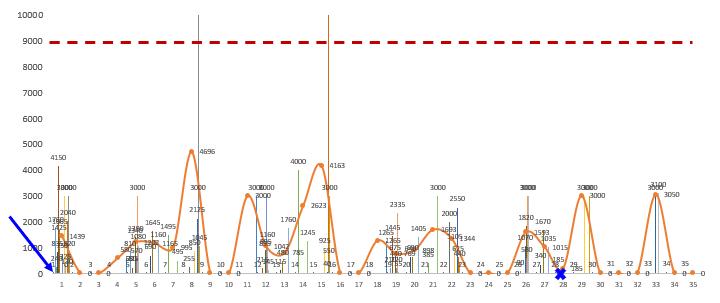
6
Water recirculation
This is not necessary during the first week of the nursery culture. In the second week, it is critical to ensure a 10% water recirculation before increasing to 30% - 70% from the third week onwards. In the case of any water quality issues such as a high organic matter content, foaming or high NH3/NO2 levels, it is recommended to reduce feeding and increase water recirculation.
To support a proper waste treatment system and maintain a healthy balance of bacteria, a premium nursery feed and good strains of probiotics, respectively, are essential to maintain water quality parameters in the system.
To ensure the stability of this nursery model, several measures are applied simultaneously:
• Back-up machinery running alternately day and night • Biosecurity protocols to prevent the entry of disease pathogens from outside of the farm or their spread within the farm and reduce the contamination from neighbouring farms • Reasonable use of chemicals by determining the right dosage through the measurement of ORP • Strict ban on the use of antibiotics • Good control of feeding rate and use a premium nursery feed to avoid problems of water pollution.
6
Transfer to grow-out ponds
It is necessary to actively plan the transfer of shrimp to the grow-out ponds before the carrying capacity within the nursery pond is reached or before being forced to transfer due to deteriorating environmental conditions or shrimp performance. In South Vietnam, the transfer is planned when shrimp reach size 0.2g/juvenile or 5,000 juveniles/ kg. At this stage, the juveniles have reached their full morphological development and are robust enough to be moved to a less controlled pond environment.
Prior to transfer, farmers should stop 1-2 meals and vitamin C is added to the feed to reduce stress and avoid mass moulting. The transfer can be performed through a gravity pipe or via dry transfer; for the latter, the travel time should be less than 2 minutes. Oxygenated water tanks should be used if the travel time is longer than 2 minutes. In addition, the water parameters of the grow-out tank/ pond should be the same as in the nursery tank.
Stocking density 1 – 3 PL/liter Nursery tank volume 100 m3 Nursery time 3 – 4 weeks Initial weight 3 mg Final weight 0.6 g/juvenile ADG 26 mg/day Biomass 1.2 kg/m3 FCR 0.8 Survival rate 88%
Success rate 95%
ADM product VANA NANO, MeM & BACTOSAFE H
Nursery production cost USD10/1,000 juveniles Remarks VANA NANO & MeM are nursery feeds; BACTOSAFE H is probiotics
Table 3. Results of average performance level of ADM nursery cycles. Henry Cuong is Aqua Technical Manager, Asia.
Truong Ngoc Thao is R&D Manager.
Phong Chau is Biosipec Pilot Lead.
Van Thi Thai Nguyen is Aqua Brand Manager, Asia. Email:van.nguyen@adm.com
All authors are with ADM Animal Nutrition
Key achievement of the recirculation model
After operating 23 nursery cycles at the ADM location in South Vietnam, this recirculation model was proven to successfully separate the suspended solids and control toxic compounds such as NH3 ≤ 2ppm, NO2 ≤ 2ppm (Figure 2) and Vibrio density at ≤ 103 CFU/mL (Figure 3). The average survival and success rates using the recirculation model have been proven to be high at 88% and 95%, respectively. The cost of production at this nursery stage was USD10/1,000 juveniles (Table 3). Comparing with the commonly used water exchange model in Asia, the recirculation model operates with 10 to 15 times lower water volumes during the nursery phase.
Conclusion
At ADM, we recognise the opportunities available and therefore, we work together with our customers to identify and implement farming practices that can reduce adverse environmental impacts and improve on-farm economics. Through our unwavering commitment to sustainability, we deliver solutions that meet customers’ aspirations of taking care of their shrimp health and with the adoption of sustainable farming practices.
Water management is a critical issue in aquaculture. As we see an increase in regions classified as water scarce or projected to face water scarcity in the future, the reduction of water consumption and improvement of water quality are vital for aquaculture production. Besides achieving excellent zootechnical results, the recirculation model also promotes sustainable shrimp farming, as water consumption and organic matter discharge are low, the chemical application is minimal and there are absolutely no antibiotics applied.
To conclude, the recirculation model can be adapted easily to the existing water exchange model by re-allocating one or several ponds. This will provide an excellent alternative during times when water quality is difficult to control.
